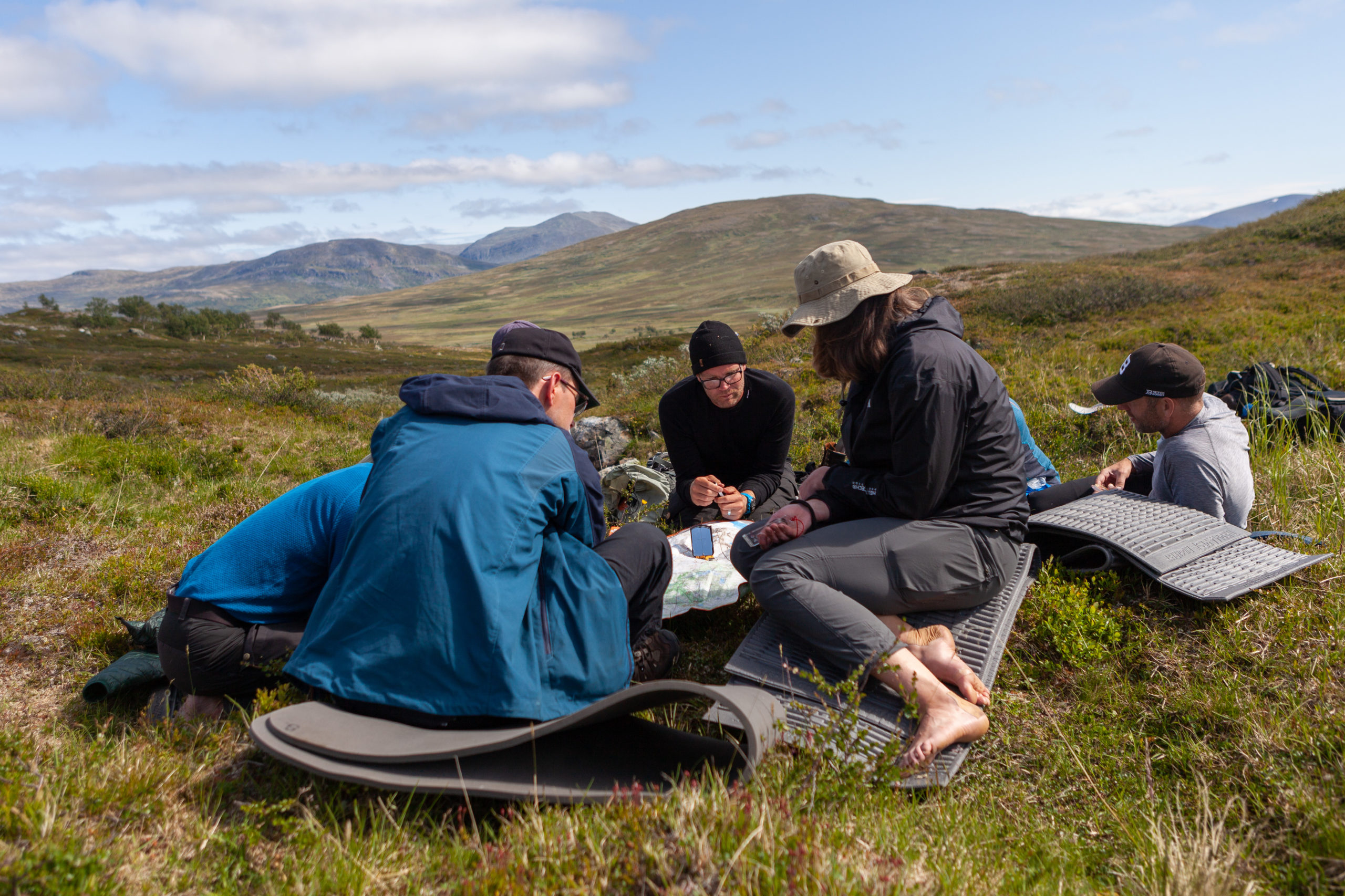Travel & Safety plan
Before an adventure I usually do some kind of travel and safety plan. The amount of time I put into these differ a lot depending on the adventure and location. Here I give you an example of how to build a plan like mine.
Travel & Safety Plan
Descriptive title with dates
Written by: Daniel Vilhelmsson Wesén
A short but comprehensive text about the adventure, the goal of the adventure and what you want out of it. Preferably the number of days, overall terrain and estimated distance. Laidback adventure in the Swedish mountains sounds nice but what do you mean with laidback?
Here I usually add a table with information about the participants.
Participants – Contact – Emergency contact – Medical/allergies
Important contacts during travel, such as;
- Mountain station (starting point) — number and person we talked to.
- Mountain station (finishing point) — number and person we talked to regarding our stored gear.
- Railway company — number for customer service.
- InReach – how to contact us on our satellite communication unit.
Travel plan
Location, overall route choice, time frames, highlights, difficulties during the day. If you were sitting back home following your partner or gathering a rescue party, which info could be nice to have? Which information sources are available in advance, type of maps, guidebooks, weather forecasts, snow conditions, human contacts, history etc? An example can be read below.
Leaving home, Saturday
Taking the bus to town at 3.55pm, switching to train 56 going from Stockholm to Narvik. Here I personally add ticket numbers and things like that, time, if I will meet someone along the way joining the adventure.
Monday
I’m jumping off in Gällivare, Sweden where I have 30 minutes to stretch my legs before my final transfer. Reaching Ritsem early afternoon, we complete the last preparations and then ski over the lake following the snow mobile trail. Hope to pitch our tent at 8 pm at the latest close to the cabins at (coordinates)
Tuesday
Today we have approximately 4 hours of skiing. The area is known to us and we only have one river that we have to be sure is safe to cross over before doing so. We will move SE (south east) all day through the valley (name) and pitch our tent at the end of the valley at long lat. Today we have to think about avalanche risk and watch out for … Today we also have a good view of the beautiful area called Äphar. Be specific about things, highlights, any wind shelter, bailouts or lack of things that we should know about. Plan B is a possibility today if something happens.
Going home, Wednesday
Arriving early at the train station. Taking train 21 from place at 8:30am to place. Will be back home at the central station on Thursday around 2pm.
The goal of a documented safety plan is to establish the thinking, routines and experiences that can form the basis for conscious decisions in case of emergency. Safety work is a continuous process that demands self-insight and living knowledge based on experience.
Safety plan
Main responsibility: Daniel Vilhelmsson Wesén
Keywords in our safety plan
Prevent, good judgement, travel according to ability, stay within the limits of the group, be flexible, outdoor friend(s) (take extra care of him/her), warm, dry, fed.
Before leaving
Go through the plan, the equipment needed and this document with everyone, individually as well as in the group. Discuss the emergency procedure, how the phones work in the emergency huts and our satellite communication unit (InReach).Share this travel & safety document with the above emergency contacts.
In the event of an accident
Life threatening situation — first aid — buddy rescue — alarm — contact the next of kin — incident description.
| WHO – | the name of the person calling in the alarm. |
| WHAT– | what kind of accident. |
| WHERE – | the place of the accident, long, & lat. |
| WHEN – | time of the accident. |
| INFO – | important with accurate and thought through information about the accident
and health status as well as any other relief efforts that may be available. |
First aid kit — guide
An inventory of what the guide(s) has in their first aid kit.
Hard pocket mask, Sam splint, medicine, wind sack , etc.
First aid kit — personal
All participants have their own smaller first aid kit and medicine. Inventory…
Emergency phones/huts along the planned route
Changing the route
In case of an accident or if we need to change the route due to lack of time or other reasons, we will discuss it as a group but Daniel will make the final decision. Relatives will be contacted with the new route and the reason.
Risk assessment
| Event | Cause | Preventive measure | Measure |
| Fall | Bad road choices, low on energy. | Traveling according to todays ability, low tempo, reduce any stress in the group by waiting for each other. | First aid, evacuation |
| Group Conflict | Unclear goals with the tour, poor communication, hunger, cold, feeling of vulnerability. | Strive for good communication. Be constructive in criticism. Evaluate every night. | Stop and insulate against the elements, eat food, discuss reason and solution. |
“Make sure the scenario you are concerned about is actually likely,
and that the solution to this scenario is actually a solution.”
Route map
A map with your route on it. Perhaps you have it online on Google maps or something with a link to it here. I usually also mark the camps, other things of interest and emergency phones.


